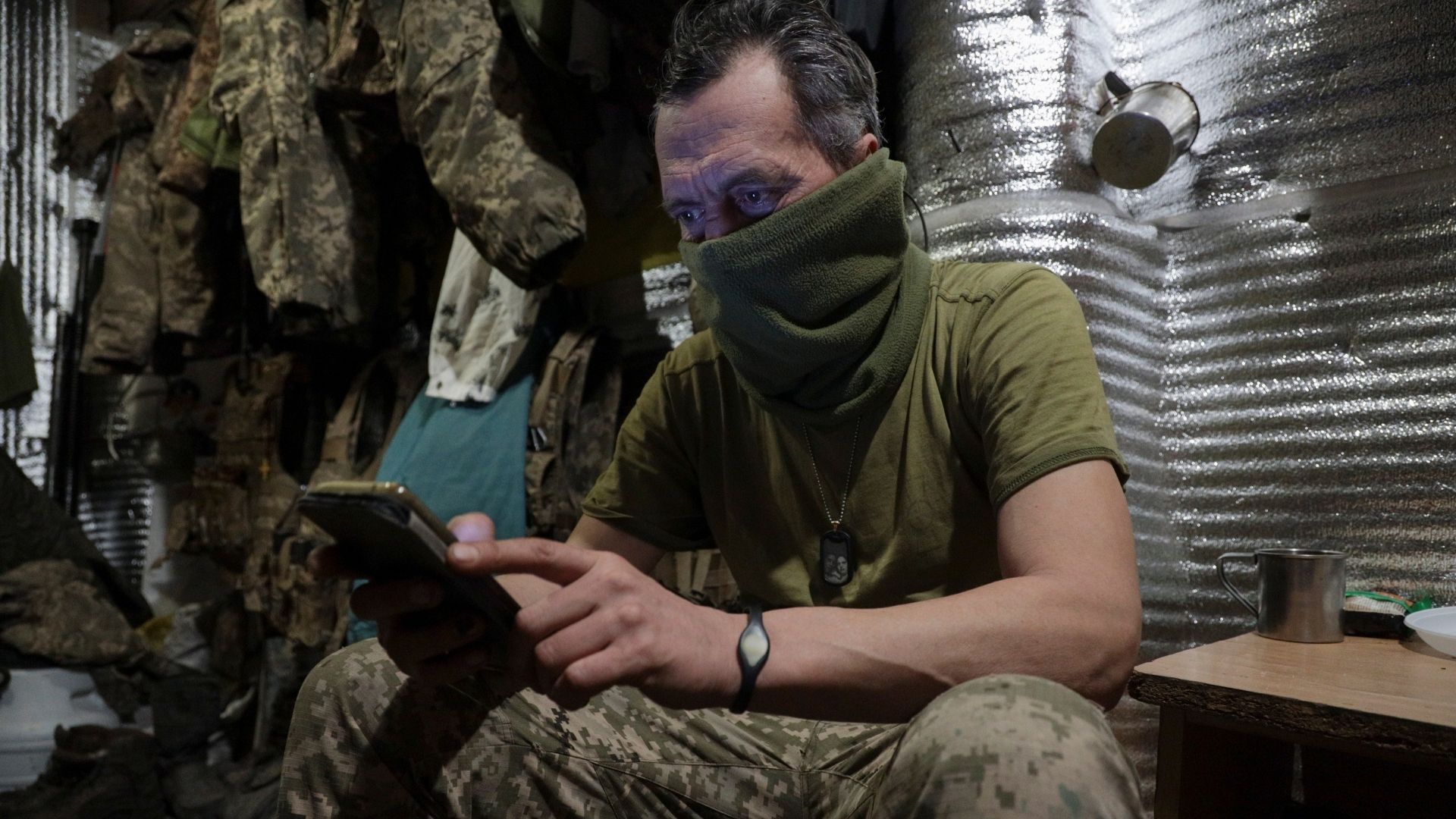War in Europe
The virtual front

picture alliance / EPA | STANISLAV KOZLIUK
Ukraine has been long known for having a strong and vibrant civil society. It has manifested itself most prominently during the 2013-2014 Maidan protests that have seen enormous levels of self-organization and grassroots activism. This spirit has carried on after the victory of the protests and spawned countless civil organizations and initiatives dealing with all kinds of topics and activities, which thrived in the flawed, but functioning democracy of the post-Maidan Ukraine. And this spirit has lived on and has manifested itself yet again after the Russian Federation launched its full-scale invasion of Ukraine on February 24, 2022.
After the first bombs fell and the first rockets hit their targets, many fled their towns and cities to find safer places to live, but even more have willingly mobilized themselves to aid the resistance effort. Civilians have organized themselves into defense groups in their villages and cities. Others have joined the huge network of volunteers who provide help with fundraising, buying and delivering humanitarian aid and military goods. However, there was another kind of volunteering, a kind that even those who have left their homes could engage themselves in. Armed with electronic devices and internet connection, they have opened a new front of this war, one that did not require physical prowess or logistical knowledge - the virtual front.
Unlike the territorial defense units, the army and the civil society organizations, these volunteers did not form any official legal entities: they did not need such formalities in order to do their jobs, organizing their activities based on personal responsibility. Yet one could quite easily divide them into different groups by the type of the activities they were engaged in. Coming from different backgrounds, each of these virtual resistance soldiers carried his or her own different set of skills and, just as the military servicemen who fight on the ground, in the air and in the sea, formed different virtual army units fighting for one cause but in different ways.
The IT army
The first and most obvious of these units is the so-called “IT army” - a loose community of IT specialists working on a wide set of activities, ranging from organizing DDOS-attacks against Russian websites spreading propaganda to hacking and developing chat-bots and specific instruments to aid civilians affected by war or the Armed Forces of Ukraine. For Ukraine, a country that has officially set on a total digitalization course since 2019, it is only fitting to have such an unusual unofficial fighting force.
The Telegram channel “IT Army of Ukraine” with over 300 000 subscribers focuses almost entirely on taking down Russian websites, but it would be unwise to limit the actual IT army to this channel, as they are many other IT specialists who try to aid the Ukrainian cause in their own way. These include hackers who use their skills for various purposes, ranging from spreading the truth about the war on Russian websites to stealing secure information or simply taking down crucial government websites in order to disrupt normal functions of the Russian state.
The Information Army
Using the power of language to spread the word about the Russian invasion, the Information Army is trying to influence public opinion outside Ukraine. There are different groups of people who engage in such work, united in different Telegram channels. Some choose to work with Russians and Belarusians, contacting them through Russian social networks such as VK and Odnoklassniki, in order to disrupt Russian propaganda and urge the citizens of Russia and Belarus to act and oppose the war. Those who speak English or other European languages choose to target Western audiences to urge their governments to do more to help Ukraine. These volunteers tend to organize themselves in separate Telegram channels in order to coordinate their efforts and focus on bringing specific topics on the agenda of their target audiences.
Creative army
Spreading information in social networks is important, but messages tend to reach their target audiences better if they contain clear and strong images. Initially, it seemed to many that there was no place for design in times of war, but it turned out that it can be used as effectively as a wartime instrument as it has been used in peacetime - to attract attention and spread specific messages as fast as possible. Many graphic designers from all over Ukraine decided to contribute to their country’s victory in this way, and started organizing themselves online in order to ensure the creation of visual materials - images and videos - that convey clear messages about Russian aggression, and show ways to support Ukraine, while trying to reach their audience’s hearts to increase the international support of Ukraine and its people’s resistance.
This, however, is only a loose attempt at categorizing the numerous initiatives that have arisen in Ukraine after February 24. There are, in fact many, many more. Having different methodologies and different ways of working, all of them aim to contribute to one cause - ensuring that justice prevails, no matter what. Looking at all these groups and initiatives, we can’t help but think of the stories we’ve heard about World War II as children. We have often heard that after Germany attacked the Soviet Union in 1941, the whole economy was set to war rails and “the whole people mobilized themselves” to fight the aggressor. Yet, we could never fully grasp the concept of the people mobilizing themselves. Having always viewed people as individuals, I, personally, honestly doubted the possibility of “the people” doing something “as a whole”, thinking of this as of a figure of speech. However, seeing all these initiatives in action in all corners of our country, I do understand now what the authors of these stories meant, even though I wish that I never did.
